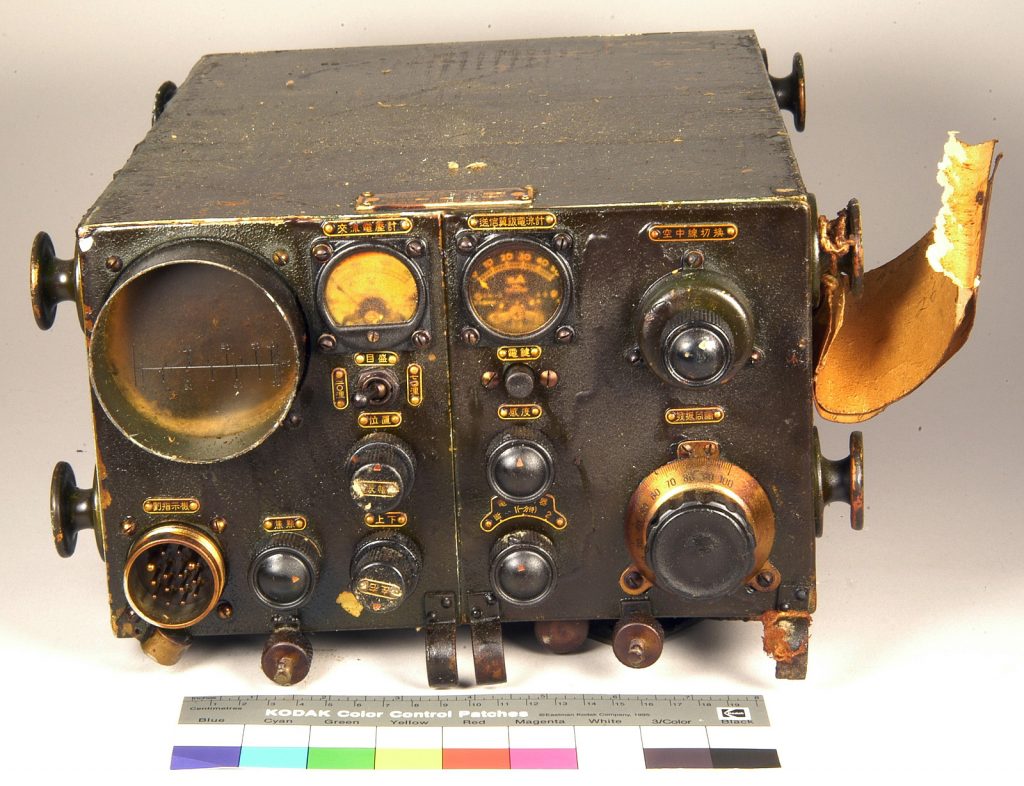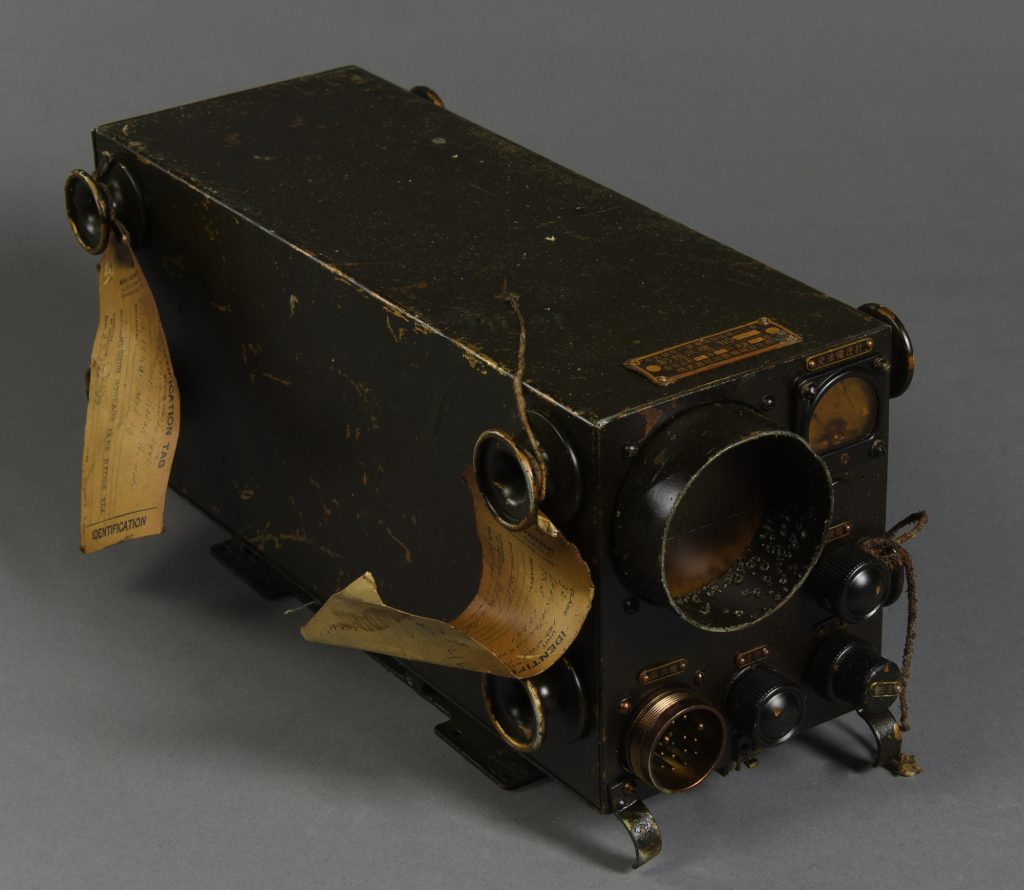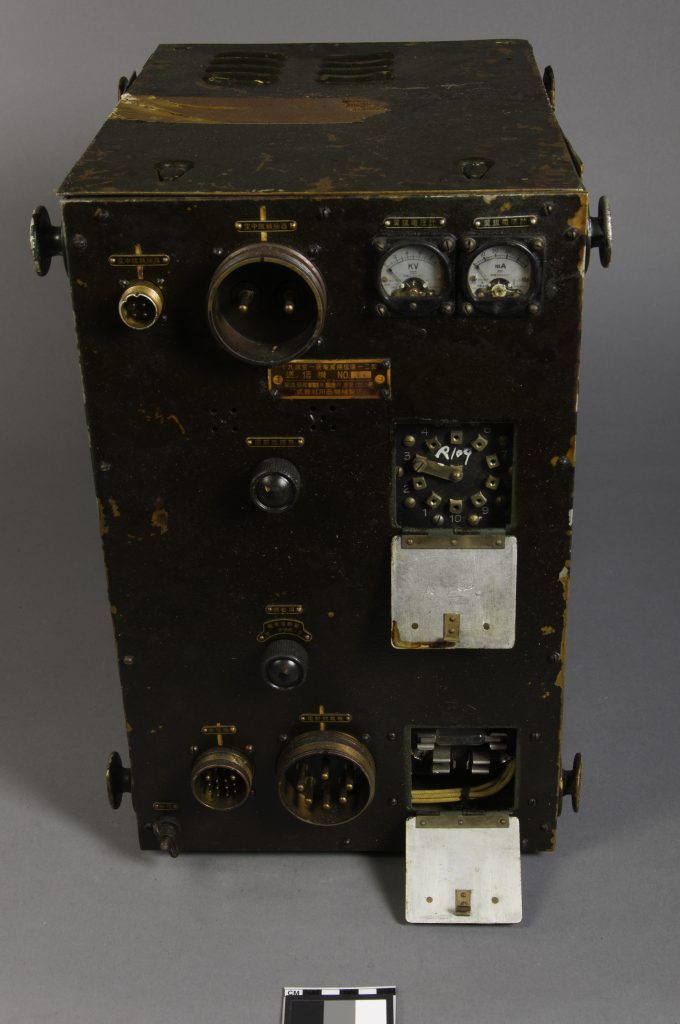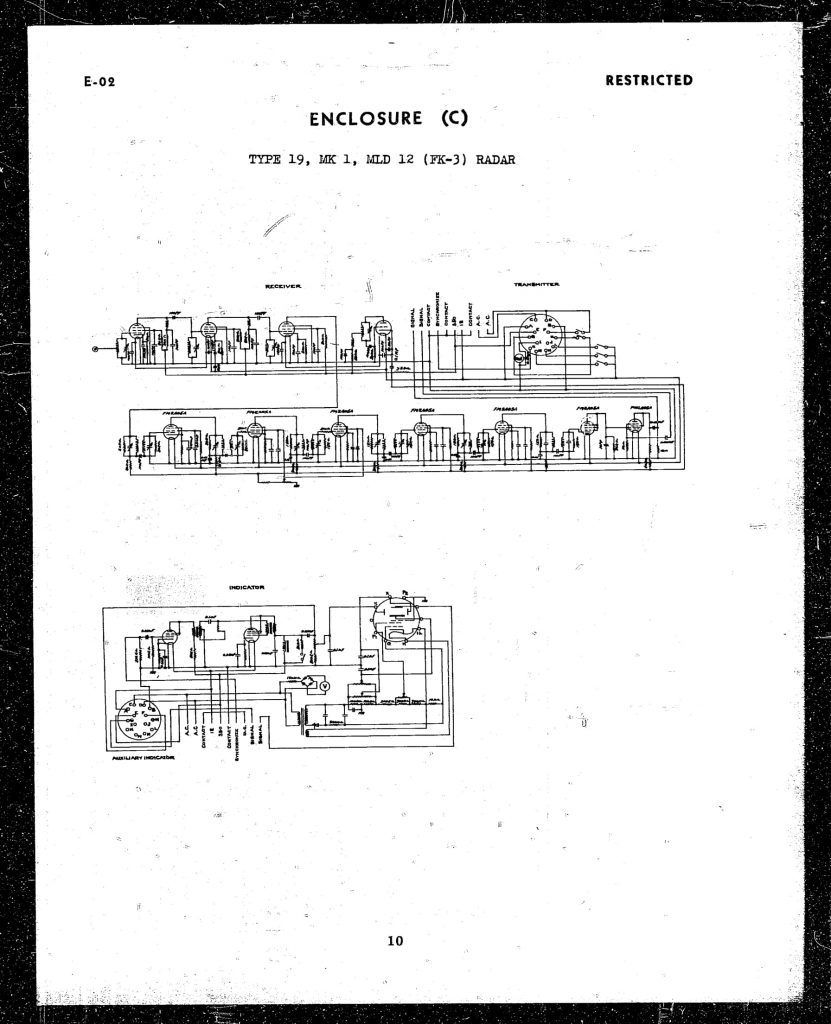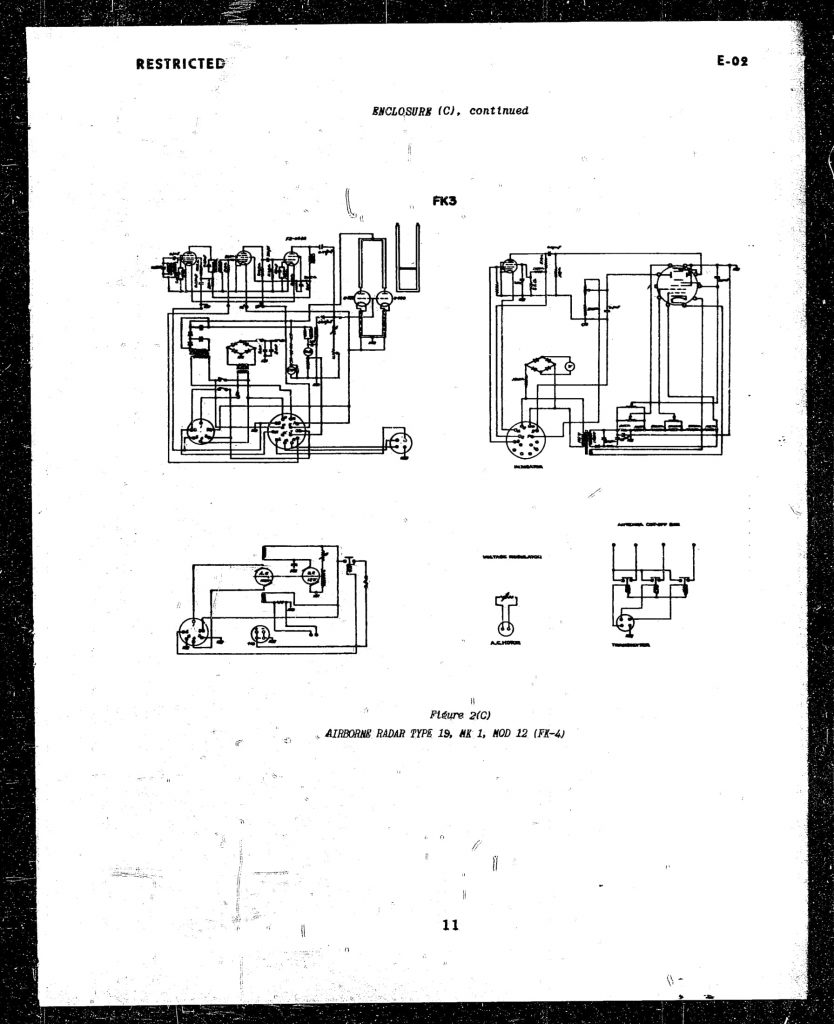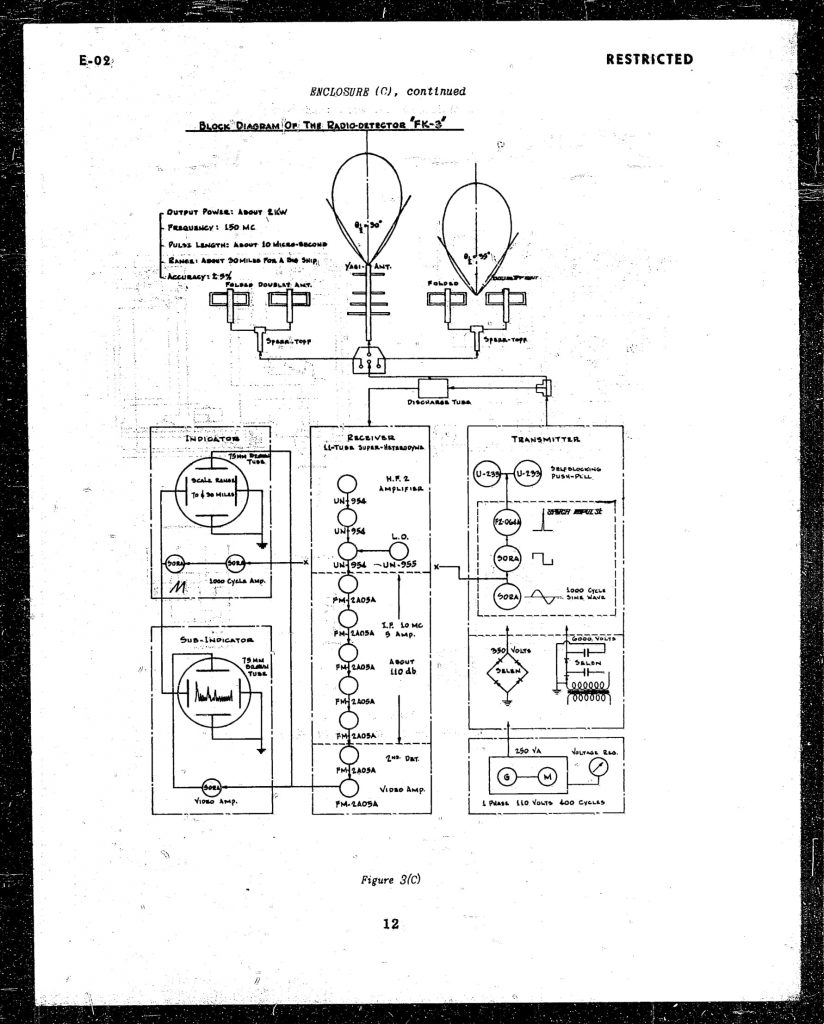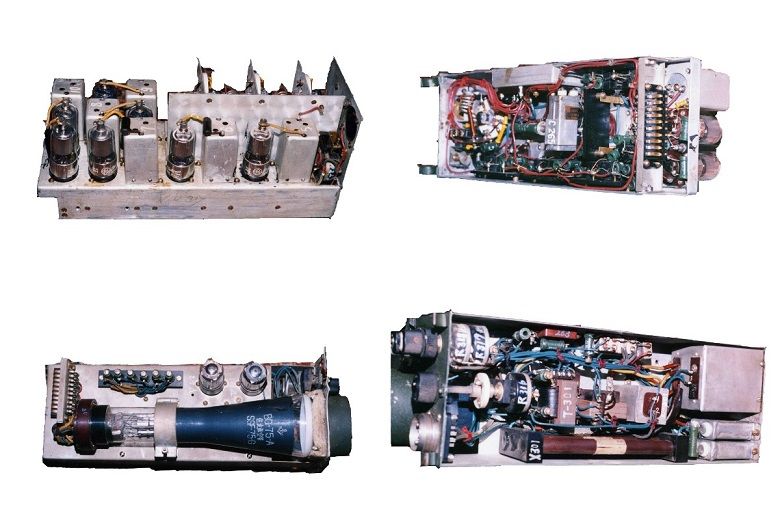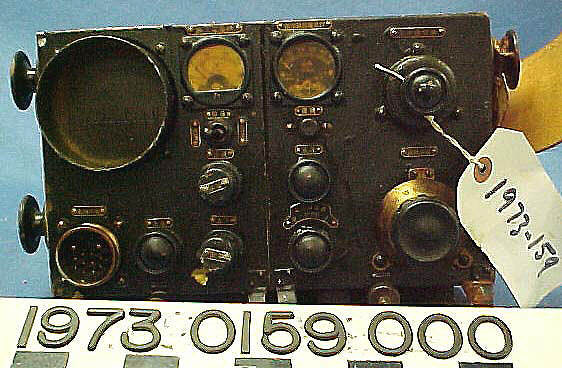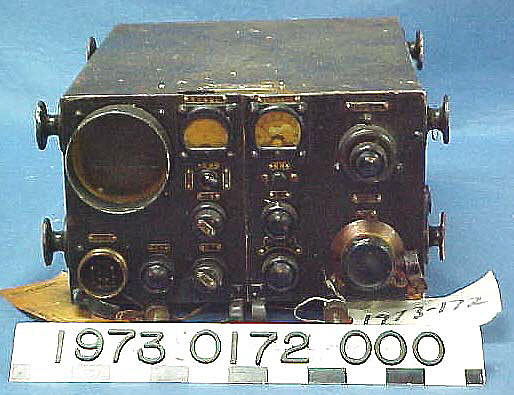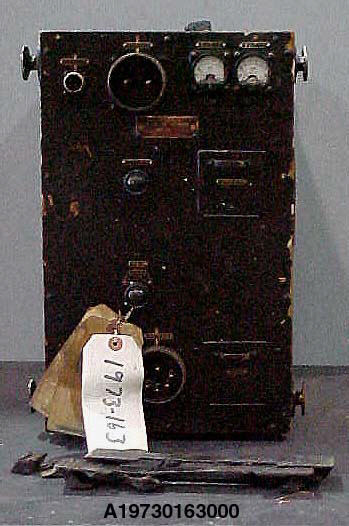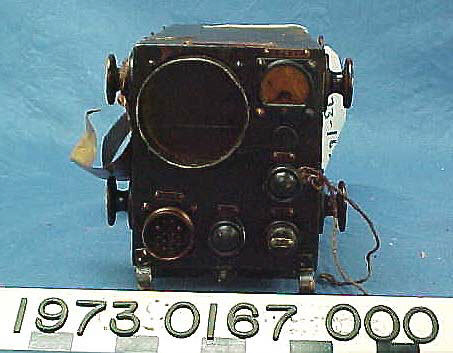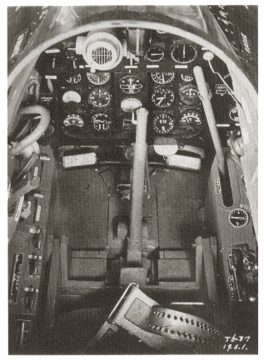十九試空一号無線電信機十二型 (19-shiki Ku-1 Gō musen denshinki 12-gata, Prototype 19 Ku 1 Wireless telegraph Model 12). The FK-3 was an airborne patrol and search radar developed by Kawanishi. It was developed from the H-6 radar and was considerably smaller and lighter with 40-60 kg (depending on source). Research on the radar started October 1944, and production halfway 1945. A few of the 200 units produced were installed on aircraft, however none were used in combat.
The radar had two indicators in parallel, the normal one for the observer and a sub indicator for the pilot.
Technical Specifications
| 十九試空一号無線電信機十二型 Protoype 19 Ku 1 wireless telegraph Model 12 |
||||
|---|---|---|---|---|
| Designation | FK-3 | |||
| Object | Patrol and Search | |||
| Research | started | October 1944 | ||
| Finished | June 1945 | |||
| Operational status | not yet used | |||
| Installation | Small Aircraft Observer’s seat | |||
| Frequency | 2 meter / 150 kHz | |||
| Power Output (Peak) | 2 kw | |||
| Pulse Length | 10 µs | |||
| Repetition Frequency | 1000 c/s | |||
| Weight | 40 or 60 kg (conflicting sources) | |||
| Units build | ~ 200 | |||
| Transmitter | Oscillation Circuit | Blocking Oscillator | ||
| Oscillator Valve | U-233 x2 | |||
| Receiver | Intermed. Freq. | 10 mc | ||
| Detector | 1st UN-954 | 2nd FU-2A05A | ||
| Local oscillator | UN-955 | |||
| Scope Representation |
Diameter | 75 mm | ||
| Scanning Axis | Linear, Logarithmic | |||
| Scale | Mechanical | |||
| Antenna | Type | Head: Yagi | Sides: Folded Doublet | |
| Gain | 16db | 6.5db | ||
| Beam Angle | Horiz. | θƒ = 30° | θƒ = 28° | |
| Vertical | θƒ = 35° | θƒ = 30° | ||
| Max. Range (Max.Effective Scale) | 150 km theoretical 60 km against large ships such as aircraft carriers |
|||
| Minimum Distance | 3 km at 1000 m | |||
| Accuracy of Range | ≃± 5% | |||
| Distance Discrimination | 4~8 km | |||
| Accuracy of Bearing | ± 3° | |||
| Angle Discrimination | ≃ 60° | |||
| No. Of Operators | Observer | |||
| Device | Dimensions | Weight |
| Transmitter | 37.5 x 28.6 x 41 cm | |
| Indicator Receiver | 28.9 x 15.6 x 37.9 cm | |
| Sub Indicator | 28.9 x 15.6 x 39.7 cm |
Reports of the U.S. Naval Technical Mission to Japan
Kawanishi J6K
The cockpit of the wooden mock-up of the Kawanishi J6K interceptor shows an interesting device. On the internet this is often speculated as an FK-3 radar indicator. And while both the FK-3 and J6K were developed by Kawanishi, this is quite unlikely. Both the timeline nor intended purpose match.
The J6K mock-up was presented in February and June of 1944, with the plane cancelled the 8th of July 1944. Development of FK-3 however didn’t start until October.
The intended purpose of the FK-3 as well was a long range search and patrol radar. It was intended to warn about incoming aircraft, but not precisely locate them as would be useful on an interceptor such as the J6K. It was also not an easy device to operate, requiring a 2nd person to do so, even if the pilot would have their own indicator.
The prototype doesn’t show any antenna either that would be required for the FK-3, nor does it show any other controls inside the cockpit, making it unclear if the device even is a radar in the first place.
While the device may indeed have been an theoretical radar or another, to date unknown device under development by Kawanishi, it is most likely not an FK-3.
Sources
- Defense Technical Information Center. (1945). A Short Survey of Japanese Radar. Volume 1.
- Defense Technical Information Center. (1945). A Short Survey of Japanese Radar. Volume 3.
- Mikesh, R. C. (2004). Japanese aircraft equipment: 1940-1945. Atglen: Schiffer Pub.
- Radar, Oscilloscope, Japanese Navy, Experimental Type 19, Ku, Mark 1, Model 12. (n.d.). Retrieved March 12, 2020, from https://airandspace.si.edu/collection-objects/radar-oscilloscope-japanese-navy-experimental-type-19-ku-mark-1-model-12/nasm_A19730159000
- Radar, Sub-Indicator, Japanese Navy, Experimental Type 19, Ku, Mark 1, Model 12. (n.d.). Retrieved March 12, 2020, from https://airandspace.si.edu/collection-objects/radar-sub-indicator-japanese-navy-experimental-type-19-ku-mark-1-model-12/nasm_A19730167000
- Reports of the U.S. Naval Technical Mission to Japan, 1945-1946. (n.d.) (Vol. E-02 Japanese Airborne Radar).
- Transmitter, Radar, Japanese Navy, Experimental Type 19, Ku, Mark 1, Model 12. (n.d.). Retrieved March 12, 2020, from https://airandspace.si.edu/collection-object/transmitter-radar-japanese-navy-experimental-type-19-ku-mark-1-model-12/nasm_A19730163000
